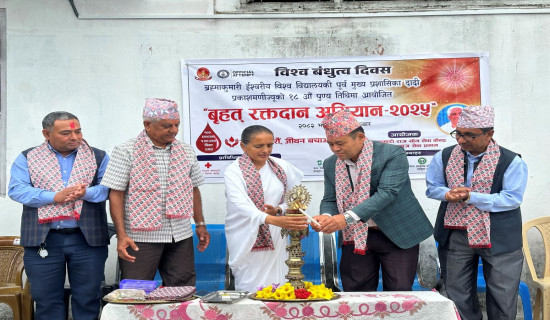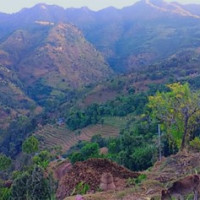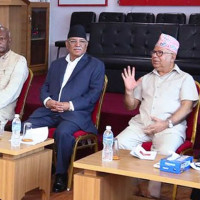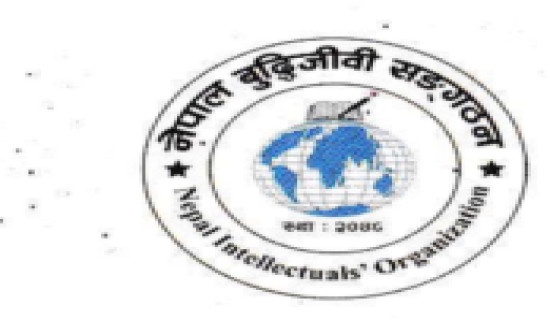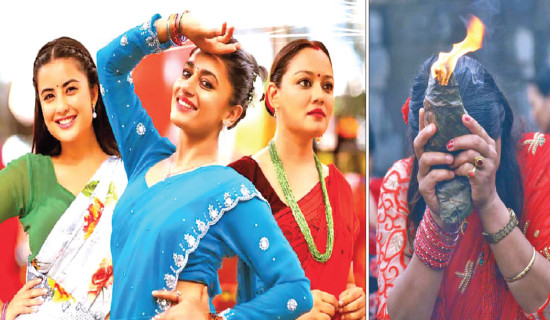- Friday, 22 August 2025
Tayamcha dance: Attraction of Gaijatra in Pokhara
By Santosh Subedi,Kaski, Aug. 12: Pokhara, the tourist city, is not only enriched with natural beauty but also equally endowed with art, culture, and traditions.
Among such culturally significant events is the Tayamcha dance performed by the Newar community of Pokhara during Gaijatra.
Gaijatra, the indigenous festival of the Newar community, is enthusiastically celebrated in Pokhara and its surrounding areas the day after Janai Purnima.
From early morning, the atmosphere of Pokhara was vibrant with performances of the Tayamcha dance alongside people wearing amusing makeup and costumes and marching through the streets in a grand procession.
Participants in Gaijatra traditionally carry pictures of their deceased family members or decorate cows and parade them through the neighbourhoods.
For the Newar community here, the festival is also regarded as one linked to death rites.
According to Ashok Palikhe, President of Newa Khala Kaski, the Tayamcha dance competition has been held continuously since 1995.
During this festival, four fairies and one joker perform a dance while musical instruments such as jhyali, khin, and shehnai are played.
The Tayamcha performed in Pokhara draws people from various nearby villages, Palikhe said.
“To preserve this fading tradition, the competition is organised annually. This year, the main attraction of Pokhara’s Gaijatra, the Tayamcha dance competition, is set to be held at Shishuwa, Pokhara-30.
Organised by Newa Khal Kaski and Newa Khala Shishuwa, 34 teams are expected to participate on August 16,” he added.
Cultural expert Teertha Shrestha said that Gaijatra may have begun in Pokhara as soon as the Newar community started to live in the city.
According to him, before 1925 BS, King Siddhinarayan Shah of the Baise-Chaubise confederacy brought 26 Newar families from Bhaktapur and settled them from Vindhyavasini to Ganesh Tol, naming the settlement as 26 Kuriya.
Later, names changed to Bagale Tol, Ramkrishna Tol, Ganesh Tol, Bhimsen Tol, Mohariya Tol, and Lama Chautara. The festival has likely been observed in Pokhara since then.
“This festival, rooted in death rituals, was started by King Pratap Malla to console his queen by showing that such incidents happen to others too, in an attempt to divert her mind,” he added.
“The festival also includes entertainment through satire and humorous performance, which offer a unique way to cope with grief,” he added.
“Additionally, the festival facilitates the collection of statistics on deaths throughout the year in the city,” said Shrestha.
On the day of this important festival, people perform the Ramayana in memory of the deceased dear ones. Children are often dressed as Rama, Laxman, and Sita for the performance.
It is believed that such performances help the departed souls attain a place in heaven.



